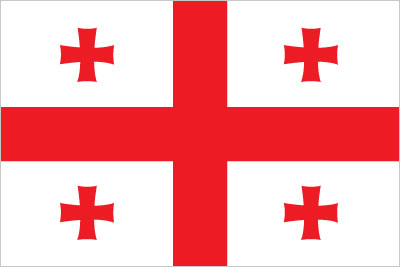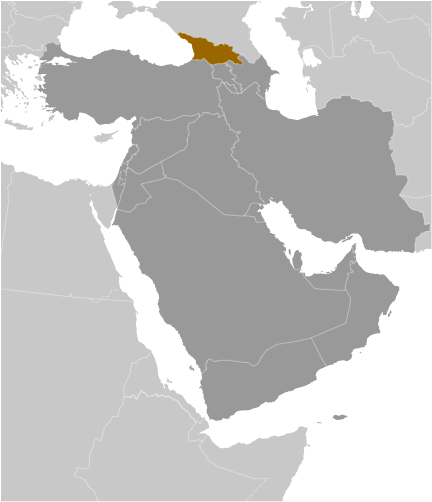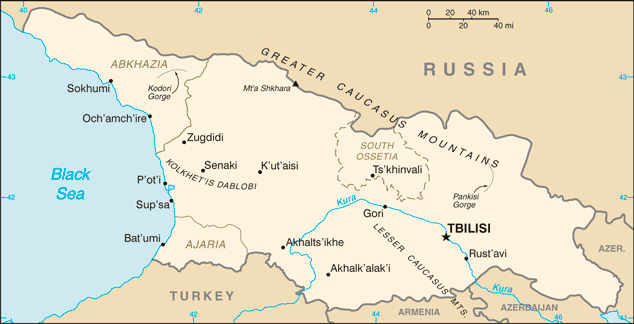|
Economy - overview:
|

|
|
Georgia's main economic activities include the cultivation of agricultural products such as grapes, citrus fruits, and hazelnuts; mining of manganese, copper, and gold; and output of a small industrial sector producing alcoholic and nonalcoholic beverages, metals, machinery, and chemicals. The country imports nearly all its needed supplies of natural gas and oil products. It has sizeable hydropower capacity that now provides most of its energy needs. Georgia has overcome the chronic energy shortages and gas supply interruptions of the past by renovating hydropower plants and by increasingly relying on natural gas imports from Azerbaijan instead of from Russia. Construction of the Baku-T'bilisi-Ceyhan oil pipeline, the Baku-T'bilisi-Erzerum gas pipeline, and the Kars-Akhalkalaki Railroad are part of a strategy to capitalize on Georgia's strategic location between Europe and Asia and develop its role as a transit point for gas, oil, and other goods. Georgia's economy sustained GDP growth of more than 10% in 2006-07, based on strong inflows of foreign investment and robust government spending. However, GDP growth slowed following the August 2008 conflict with Russia, and sunk to negative 4 percent in 2009 as foreign direct investment and workers' remittances declined in the wake of the global financial crisis. The economy rebounded in 2010-12, with growth rates above 6% per year, but FDI inflows, the engine of Georgian economic growth prior to the 2008 conflict, have not recovered fully. Unemployment has also remained high at above 15%. Georgia has historically suffered from a chronic failure to collect tax revenues; however, the government, since coming to power in 2004, has simplified the tax code, improved tax administration, increased tax enforcement, and cracked down on petty corruption, leading to higher revenues. The country is pinning its hopes for renewed growth on a determined effort to continue to liberalize the economy by reducing regulation, taxes, and corruption in order to attract foreign investment, with a focus on hydropower, agriculture, tourism, and textiles production. Since 2004, the government has taken a series of actions against endemic corruption, including reform of the traffic police and implementation of a fair examination system for entering the university system. The government has received high marks from the World Bank for its anti-corruption efforts.
|
|
|
GDP (purchasing power parity):
|

|
|
$26.52 billion (2012 est.)
country comparison to the world: 118
$25 billion (2011 est.)
$23.32 billion (2010 est.)
note:
data are in 2012 US dollars
|
|
|
GDP (official exchange rate):
|

|
|
$15.8 billion (2012 est.)
|
|
|
GDP - real growth rate:
|

|
|
6.1% (2012 est.)
country comparison to the world: 41
7.2% (2011 est.)
6.3% (2010 est.)
|
|
|
GDP - per capita (PPP):
|

|
|
$5,900 (2012 est.)
country comparison to the world: 147
$5,600 (2011 est.)
$5,300 (2010 est.)
note:
data are in 2012 US dollars
|
|
|
GDP - composition by sector:
|

|
|
agriculture: 8.3%
industry:
23.7%
services:
68% (2012 est.)
|
|
|
Labor force:
|

|
|
1.959 million (2011 est.)
country comparison to the world: 122
|
|
|
Labor force - by occupation:
|

|
|
agriculture: 55.6%
industry:
8.9%
services:
35.5% (2006 est.)
|
|
|
Unemployment rate:
|

|
|
15.1% (2011 est.)
country comparison to the world: 147
16.3% (2010 est.)
|
|
|
Population below poverty line:
|

|
|
9.2% (2010)
|
|
|
Household income or consumption by percentage share:
|

|
|
lowest 10%: 2%
highest 10%:
31.3% (2008)
|
|
|
Distribution of family income - Gini index:
|

|
|
46 (2011)
country comparison to the world: 35
37.1 (1996)
|
|
|
Investment (gross fixed):
|

|
|
34.3% of GDP (2012 est.)
country comparison to the world: 13
|
|
|
Budget:
|

|
|
revenues: $4.1 billion
expenditures:
$4.8 billion (2012 est.)
|
|
|
Taxes and other revenues:
|

|
|
25.9% of GDP (2012 est.)
country comparison to the world: 116
|
|
|
Budget surplus (+) or deficit (-):
|

|
|
-4.4% of GDP (2012 est.)
country comparison to the world: 147
|
|
|
Public debt:
|

|
|
36.3% of GDP (2012 est.)
country comparison to the world: 99
36.5% of GDP (2011 est.)
note:
data cover general government debt, and includes debt instruments issued (or owned) by government entities other than the treasury; the data include treasury debt held by foreign entities; the data include debt issued by subnational entities; Georgia does not maintain intra-governmental debt or social funds
|
|
|
Inflation rate (consumer prices):
|

|
|
-0.9% (2012 est.)
country comparison to the world: 2
8.5% (2011 est.)
|
|
|
Central bank discount rate:
|

|
|
5.25% (31 December 2012)
country comparison to the world: 54
6.5% (31 January 2012)
note:
this is the Refinancing Rate, the key monetary policy rate of the National Bank of Georgia
|
|
|
Commercial bank prime lending rate:
|

|
|
21.1% (31 December 2012 est.)
country comparison to the world: 11
25.87% (31 December 2011 est.)
|
|
|
Stock of narrow money:
|

|
|
$1.636 billion (31 December 2012 est.)
country comparison to the world: 134
$1.737 billion (31 December 2011 est.)
|
|
|
Stock of broad money:
|

|
|
$4.72 billion (31 September 2012 est.)
country comparison to the world: 130
$4.249 billion (31 December 2011 est.)
|
|
|
Stock of domestic credit:
|

|
|
$5.35 billion (31 September 2012 est.)
country comparison to the world: 116
$4.973 billion (31 December 2011 est.)
|
|
|
Market value of publicly traded shares:
|

|
|
$795.7 million (31 December 2011)
country comparison to the world: 108
$1.06 billion (31 December 2010)
$733.3 million (31 December 2009)
|
|
|
Agriculture - products:
|

|
|
citrus, grapes, tea, hazelnuts, vegetables; livestock
|
|
|
Industries:
|

|
|
steel, machine tools, electrical appliances, mining (manganese, copper, and gold), chemicals, wood products, wine
|
|
|
Industrial production growth rate:
|

|
|
11.8% (2010 est.)
country comparison to the world: 6
|
|
|
Current account balance:
|

|
|
-$1.669 billion (2012 est.)
country comparison to the world: 132
-$1.799 billion (2011 est.)
|
|
|
Exports:
|

|
|
$3.324 billion (2012 est.)
country comparison to the world: 128
$3.326 billion (2011 est.)
|
|
|
Exports - commodities:
|

|
|
vehicles, ferro-alloys, fertilizers, nuts, scrap metal, gold, copper ores
|
|
|
Exports - partners:
|

|
|
Azerbaijan 17.3%, Turkey 10.4%, Armenia 9.9%, Kazakhstan 7.3%, Ukraine 6.2%, US 5.5%, Canada 5.1%, Bulgaria 4.7% (2011)
|
|
|
Imports:
|

|
|
$6.623 billion (2012 est.)
country comparison to the world: 114
$6.683 billion (2011 est.)
|
|
|
Imports - commodities:
|

|
|
fuels, vehicles, machinery and parts, grain and other foods, pharmaceuticals
|
|
|
Imports - partners:
|

|
|
Turkey 17.8%, Ukraine 10%, Azerbaijan 8.3%, China 7.6%, Germany 6.8%, Russia 5.6% (2011)
|
|
|
Reserves of foreign exchange and gold:
|

|
|
$2.873 billion (31 December 2012 est.)
country comparison to the world: 109
$2.818 billion (31 December 2011 est.)
|
|
|
Debt - external:
|

|
|
$8.2 billion (31 December 2012)
country comparison to the world: 99
$11.08 billion (31 December 2011)
|
|
|
Stock of direct foreign investment - at home:
|

|
|
$9.133 billion (31 July 2011 est.)
country comparison to the world: 82
$9.305 billion (31 December 2011 est.)
|
|
|
Stock of direct foreign investment - abroad:
|

|
|
$741.6 million (31 December 2011 est.)
country comparison to the world: 76
$660.3 million (31 December 2010 est.)
|
|
|
Exchange rates:
|

|
|
laris (GEL) per US dollar -
1.66 (2012 est.)
1.6865 (2011 est.)
1.7823 (2010 est.)
1.6705 (2009 est.)
1.47 (2008 est.)
|
|
|
Fiscal year:
|

|
|
calendar year
|
|
|
|





 )
)



